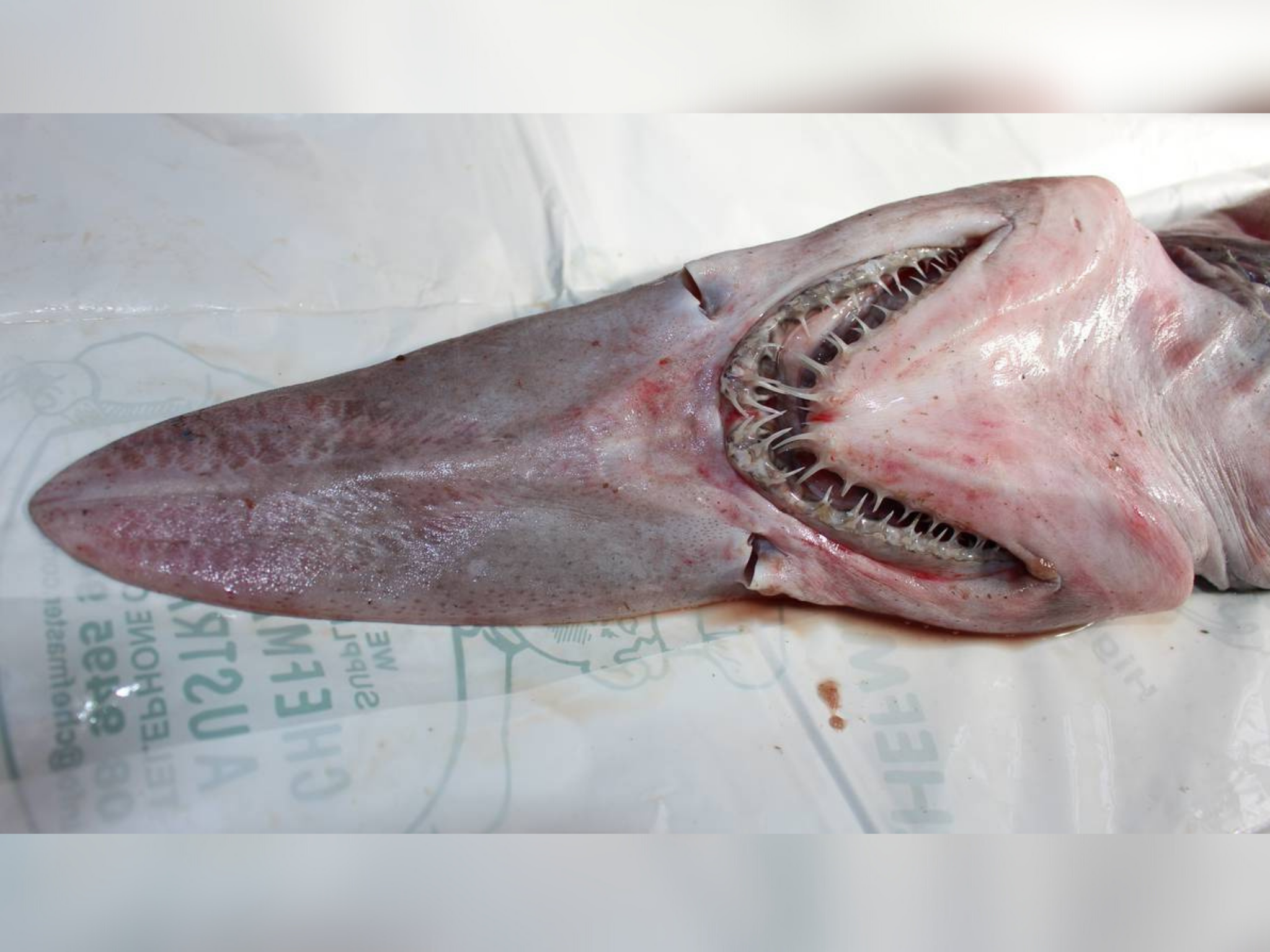

Several specimens were described erroneously as distinct species / Wiki Commons 7. Most shark specialists, however, based on research on fossils, agree that the differences are big enough for the goblin shark to be placed in its own genus.

Most notably is the resemblance to another prehistoric and extinct type of shark, the “ Scapanorhynchus.” Some scientists even want the “ Mitsukurina owstoni” to be reclassified as the “ Scapanorhynchus owstoni.” Some scientists wanted to reclassify the goblin sharkĪfter Jordan published his report and findings regarding the goblin shark, other scientists tried to connect it to other species. This means that there aren’t any other extant shark species that belong to the family of goblin sharks, which is the same as with the Megamouth shark. He also recognized it as a new genus and even a new family of sharks. Jordan recognized it as a new speciesĭavid Starr Jordan, the American fish scientist, wrote in his report that this fish wasn’t just new species, but much more. What’s remarkable is that this fish was an immature male goblin shark that was just 107 centimeters (42 in) long. The first goblin shark was accidentally caught in Sagami Bay, near Yokohama in Japan in the late 19th century. David Starr Jordan, the first person to write about the goblin shark / Wiki Commons 4. Professor Mitsukuri had brought it to Jordan, and in honor of the two men who “ discovered” it, he named it after them in his report. The first time that the newly discovered goblin shark was officially described, was in an 1898 issue of “ Proceedings of the California Academy of Sciences” by American ichthyologist David Starr Jordan. Who gave the goblin shark its scientific name? Owston in turn, realizing this was a newly discovered species of shark, gave it to Professor Kakichi Mitsukuri at the University of Tokyo, who first examined it. The first goblin shark, caught by Japanese fishermen, was acquired by Alan Owston (1853-1915), a UK-born collector of Asian wildlife. The scientific name of the goblin shark is “ Mitsukurina Owstoni,” a name that refers both to the person who acquired the first specimen and the zoologist who expanded this newly discovered species for the first time as well. Its scientific name has a different origin The Japanese demon referring to the name of the goblin shark / Pixabay 2. Goblin shark is an English translation of the name that the Japanese fishermen gave to it, tengu zame. Tengu is the demon, and “ zame” means “ shark.” Japanese fishermen accidentally caught this monster, and because they were shocked by its terrifying appearance, they started calling it “ tengu zame.” This refers to a demon in Japanese folklore.

It’s also here that this type of shark was discovered in the late 19th century. The goblin shark has a vast range but is most commonly found in the seas surrounding Japan. Its common name comes from a Japanese demon In this post, you’ll get to discover the ultimate list of facts about the Goblin Shark, a creature featured in Animal Stratosphere’s list of creepiest animals in the ocean. This monster of the deep-sea is the perfect nightmare material, which simply means you’d rather not come across one of these. Heather brings considerable written, audio and video skills to the Chronicle’s digital team.If you think that Jaws is the scariest shark in the ocean, then you definitely haven’t met this one yet. She joined the Chronicle team in December 2013 after moving to Houston to be near her oil industry-based family and lives happily in the Heights.
#Everblue 2 goblin shark series#
Heather has reported live from the White House and the Oscars, as well as produced cutting edge series from sub Saharan Africa.
#Everblue 2 goblin shark tv#
Heather went on to appear on primetime TV in the UK, the US and across the Globe interviewing the likes of former UK Prime Minister Tony Blair, writer Maya Angelou and actor George Clooney. Heather immediately began a career with perhaps the world’s most famous news organization, BBC News, initially covering the UK and Europe before moving to New York to take up the position of US reporter for BBC Radio. British born, Heather studied at England’s University of Sheffield and University of Central Lancashire and on graduating was named the UK’s Broadcast Journalism Training Council Young Journalist of the Year. Heather Alexander is a reporter for and the Houston Chronicle where she writes daily on news breaking all over the Houston metro area.


 0 kommentar(er)
0 kommentar(er)
